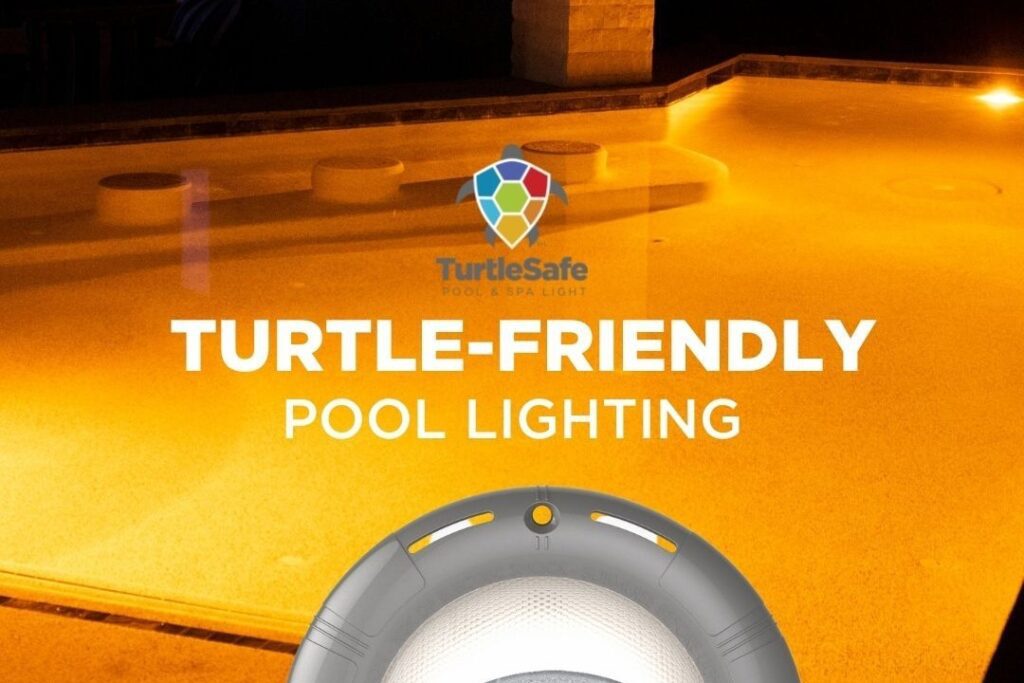In recent years, there has been growing concern about the impact of artificial lights on marine wildlife, particularly sea turtles. These fascinating creatures, known for their long migrations and unique nesting habits, face significant challenges due to human activities. One specific area where their lives are affected is the lighting around coastal areas, including swimming pools. In response to this issue, the concept of “turtle-friendly lights” has emerged. This article explores what turtle-friendly lights are and why pool builders should consider offering them.
Understanding Turtle-Friendly Lights
Turtle-friendly lights are specially designed lighting fixtures that help reduce the negative impact of artificial lights on sea turtles. These lights are designed to emit specific wavelengths of light that are less disruptive to turtle behavior and nesting patterns. By using these lights, pool owners can enjoy a well-lit outdoor space while minimizing the disturbance caused to these magnificent creatures.
The Importance of Turtle Conservation
Before we delve into the reasons why pool builders should offer turtle-friendly lights, it is essential to understand why turtle conservation matters. Sea turtles play a crucial role in maintaining the health of marine ecosystems. They help control jellyfish populations, facilitate nutrient cycling, and provide a source of food for other marine species. Additionally, sea turtles have significant cultural and economic value in many coastal communities, attracting tourists and supporting local businesses.
Environmental Benefits
By incorporating turtle-friendly lights into their pool designs, builders can contribute to a more sustainable environment. Traditional outdoor lighting can disorient hatchling sea turtles, leading them away from the sea and towards dangerous areas such as roads or buildings. This has a detrimental effect on the survival rates of these vulnerable creatures. Turtle-friendly lights help mitigate this issue by directing the light downwards, reducing light pollution on the beach, and ensuring that hatchlings find their way safely to the ocean.
Legal Requirements and Conservation Efforts
In some coastal regions, there are legal requirements or voluntary guidelines that mandate the use of turtle-friendly lighting. These regulations aim to protect nesting sites and ensure the conservation of sea turtle populations. By offering turtle-friendly lights, pool builders can help their clients comply with these regulations and demonstrate their commitment to environmental stewardship. Moreover, it positions them as responsible and forward-thinking businesses, which can attract environmentally conscious customers.
Market Differentiation
In today’s competitive pool-building industry, finding ways to stand out is crucial. By incorporating turtle-friendly lights into their designs, pool builders can differentiate themselves from their competitors. This unique selling point showcases their dedication to sustainable practices and appeals to environmentally conscious customers. It opens up opportunities to attract a niche market segment that values eco-friendly choices, ultimately leading to increased brand reputation and customer loyalty.
Public Relations and Positive Impact
Offering turtle-friendly lights presents an excellent opportunity for pool builders to engage in positive public relations. By promoting the use of these lights, they can highlight their commitment to wildlife conservation and environmental protection. This can lead to positive media coverage, community recognition, and an enhanced brand image. Additionally, clients who choose pool builders that offer turtle-friendly lights can feel proud of their contribution to turtle conservation, fostering a sense of satisfaction and goodwill.
Collaboration with Conservation Organizations
Pool builders can further amplify their impact by partnering with local conservation organizations. By establishing collaborations, they can actively contribute to sea turtle conservation efforts. This partnership can involve financial support, participation in awareness campaigns, or even direct involvement in habitat restoration projects. Such initiatives not only benefit the environment but also create meaningful connections within the community and demonstrate a genuine commitment to making a difference.
Conclusion
In conclusion, turtle-friendly lights are an innovative solution to mitigate the negative impact of artificial lighting on sea turtles. Pool builders have an opportunity to play a significant role in sea turtle conservation by offering these lights as part of their services. Beyond compliance with legal requirements, the adoption of turtle-friendly lights showcases a builder’s commitment to sustainability, differentiates them from competitors, and enhances their brand reputation. By embracing this environmentally conscious approach, pool builders can contribute to the preservation of these magnificent creatures and create a positive impact in their communities.
